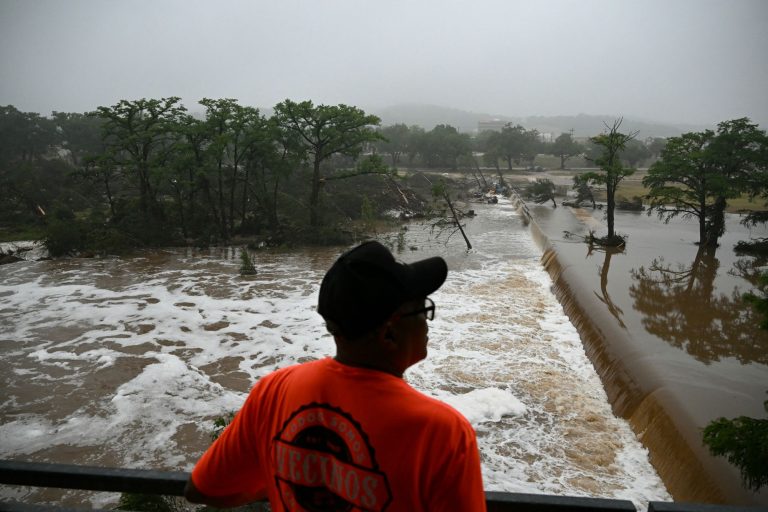Texas Flood Rescue Story Debunked: A Case Study in Misinformation During Disaster
The devastating flash floods that ravaged Central Texas on July 4, 2025, left a trail of destruction, claiming at least 82 lives and leaving dozens missing. Amidst the chaos and despair, a story emerged offering a glimmer of hope: two young girls, swept away by the raging waters, had been miraculously found alive, clinging to a tree 30 feet above the flood line. This narrative, initially reported by a local online outlet, the Kerr County Lead, and amplified by social media and even some national news platforms, quickly spread like wildfire, providing a much-needed emotional buoy in a sea of grief. However, the story, which captivated the nation and offered a brief respite from the grim reality, proved to be tragically false, highlighting the dangerous speed at which misinformation can proliferate during times of crisis.
The initial report, citing unnamed “witnesses,” was shared by an Austin-based volunteer, Cord Shiflet, on his Facebook page, accompanied by a video. The post quickly gained traction, shared and reshared across various social media platforms, picked up by NBC’s San Antonio affiliate, and further disseminated by influencers and online news outlets. The story resonated deeply with a public desperate for positive news amidst the widespread devastation. The image of two young survivors, defying the odds, provided a powerful symbol of resilience and hope. However, as the story circulated, cracks began to appear in its foundation. Journalists attempting to verify the account were unable to find any corroborating evidence. The absence of official confirmation and the reliance on anonymous sources raised red flags, prompting some to question the veracity of the report.
As doubts mounted, Congressman Chip Roy of Texas publicly urged caution, stating emphatically that the claim was “100% NOT verified.” This public intervention by a prominent figure served as a crucial turning point, prompting increased scrutiny of the circulating narrative. The pressure to verify the information intensified, leading to a closer examination of the story’s origins and the evidence supporting it. The lack of any concrete proof, coupled with the growing skepticism, ultimately led to the retraction of the story by both the Kerr County Lead and Shiflet. In a statement, Shiflet admitted that the information had originated from local public safety sources but conceded that he had been “too quick to share it,” acknowledging the gravity of disseminating unverified information during a crisis.
The revelation that the rescue story was fabricated sparked understandable anger and frustration among residents already grappling with the immense trauma and loss inflicted by the floods. The false hope, followed by its abrupt retraction, added another layer of emotional distress to an already reeling community. The Kerr County Sheriff’s Office, recognizing the potential for further harm, issued a public plea for vigilance, urging residents to refrain from spreading unverified information and emphasizing the emotional toll such rumors could take on grieving families. The incident underscored the vital importance of responsible reporting and information sharing during emergencies, highlighting the need for verification and cautious dissemination of information, particularly when emotions are running high.
The fabricated rescue story serves as a stark reminder of the challenges posed by misinformation, especially in the digital age where information, accurate or not, can spread rapidly across vast networks. The incident underscores the need for critical thinking, media literacy, and responsible information sharing practices. The pressure to provide up-to-the-minute coverage during rapidly unfolding events should not come at the expense of accuracy and verification. News outlets, social media platforms, and individuals all share a responsibility to ensure the information they disseminate is accurate and reliable, particularly during times of crisis when misinformation can exacerbate existing anxieties and hinder recovery efforts.
Beyond the immediate fallout of the false rescue story, the incident raises broader questions about the state’s preparedness for the devastating floods. As the confirmed death toll continues to rise, residents are demanding answers and accountability. Investigations are underway to determine the factors that contributed to the extent of the damage and loss of life, including the effectiveness of early warning systems, emergency response protocols, and infrastructure resilience. The tragedy has exposed vulnerabilities in disaster preparedness and highlighted the need for improved communication, coordination, and resource allocation to mitigate the impact of future extreme weather events. The lessons learned from this disaster, including the dangers of misinformation, will be crucial in shaping future disaster management strategies and building more resilient communities.


